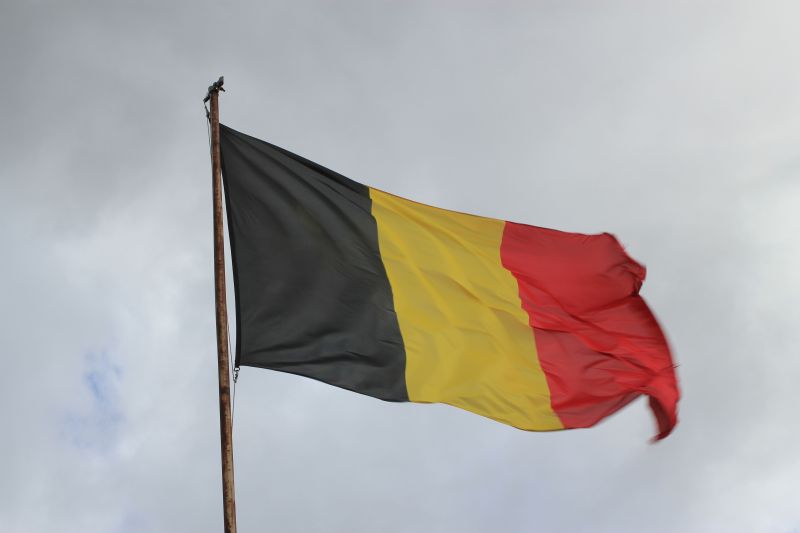Tech
TechScape: An elite Silicon Valley school tests a tech fast

Hello, and welcome to TechScape. I’m Blake Montgomery, the technology news editor at Guardian US.
I’m taking over TechScape from Alex Hern, and I’d like to introduce myself and my ideas for this newsletter.
A bit about me: I started working at the Guardian the day Sam Bankman-Fried went on trial. My first holiday from my new job coincided with the shock firing of Sam Altman from OpenAI. The story I tell over and over again at parties is the one about how I was arrested and jailed while reporting a story on deadly testicular injections.
The new newsletter: TechScape plugs you into the politics, culture and consequences of technology. We’ll dissect the significance of the week’s most substantial tech news, investigate odd niches, catch you up on the best of the Guardian’s reporting and offer a helpful tip now and then. My version of TechScape is a newsletter about technology and the people making it. Tech – both as a product and an industry – is the biggest driver of change in our age. It intersects with every aspect of our lives and changes our everyday actions. Think of TechScape as a guide to the future and the futuristic present.
Thank you for joining me.
This week on my iPhone
Average screen time per day: six hours and two minutes.
Most used app: Yu-Gi-Oh! Master Duel. This app, just downloaded last week, inflames my nostalgia for my teen trading card years, for better and worse. Quite a lot in the game has changed since then, so there’s much digital territory to explore.
The elite Silicon Valley school testing a temporary total tech ban
Leaders across the US, the UK and Europe are debating whether students should have cell phones in their hands during the school day. A growing number of people in power – everyone from presidents to school superintendents – believe they shouldn’t.
California’s governor signed a bill last week mandating that schools reduce student screen time, and Los Angeles’s school district, the second-largest in the US, voted to prohibit phones on public high school campuses starting in 2025. The UK is not making its decision piecemeal like the US: ministers announced plans to ban phones in schools across the country in February. Hungary now requires schools to collect students’ devices at the start of the school day. France is in the midst of a trial ban on phones for students under 15. The Netherlands banned phones in schools as of 1 January 2024.
The consensus is growing. It is a popular stance among both conservatives and progressives to take up arms against screen time. The opinion in vogue is that phones are bad for everyone, especially children. One problem: it is a truth universally acknowledged that a person living in our age must be in want of a smartphone. How to prepare students to balance the two competing necessities – screen time and screen-free time – within them?
An elite school in the heart of Silicon Valley is asking students to reconsider their relationships with technology by putting their devices down. Castilleja, an all-girls private school where tuition is $62,400 per year, has banned cell phones in its Palo Alto, California, classrooms since before middle school head Laura Zappas can remember. Smart watches, too. The school is home to 185 students in grades six, seven, and eight, ages 11 to 14.
This past school year, Zappas instituted an entirely tech-free week, telling every Castilleja student to lock up their devices – smartphones, smart watches, tablets and school-issued laptops – at the start of the day for a week in March. The girls took notes and completed all assignments on paper, recording data from science experiments in graph journals. They wrote down what homework they needed to finish in paper planners personally distributed by Zappas. They complained of cramps from hand-writing more lines in one day than in all the rest of the school year.
“We’ve found that students with laptops – they can have a couple screens open at the same time,” said Zappas. “They could be messaging or they could be playing a game instead of taking notes. Or their immediate impulse to start the class was to come in and open their laptops right away rather than waiting for direction from the teacher or what they were doing. It was just this constant pull to the laptop.”
The initiative, simply dubbed “Tech-Free Week”, served as a reset for the digital-first teaching practices of the pandemic era, Zappas said: “Before Covid, I think we were using a blend of paper and technology. And then I know that my own teaching shifted pretty dramatically with Covid and having to have all assignments had to be electronically submitted. And so after Covid, that just became our routine.”
What would going unplugged look like as a way for our students and our teachers to really think more deeply about our relationship with technology?
The administrator described Tech-Free Week as a pause for reconsideration: “What would going unplugged look like as a way for our students and our teachers to really think more deeply about our relationship with technology? How can we engage as a community together without screens?”
The results were favorable: 42% of students reported improved focus in class and reduced distractions during schoolwork, according to a poll conducted by the school. Nearly three-quarters of the teachers asked for Zappas to repeat the initiative. She’s in talks with the upper school’s administration, grades nine through 12, about conducting a tech-free week for older students.
Zappas emphasized that advance notice and copious preparation made tech-free week possible. She notified the school’s teachers of the initiative four months prior and pitched it to parents six weeks ahead. She asked that both teachers and parents consider how they can model a healthy relationship . That one tech-free week required so much planning would indicate that devices may be inextricable from modern life, even for students as young as 11.
after newsletter promotion
We had a French teacher who gave them all dictionaries, and she said they hadn’t ever seen a dictionary in French before.
“We had a French teacher who gave them all dictionaries, and she said they hadn’t ever seen a dictionary in French before,” said Zappas. “And it took them quite some time then to figure out: ‘Well, what really is the right word I want to use here? How do I find that?’”
Zappas advocates for striking healthy balances with screen time rather than wholesale abandonment of devices. She finds the debate over Jonathan Haidt’s Anxious Generation, which advocates for forbidding children from having smartphones until high school, rather overheated.
I think it has to be about referencing things and not just banning them. Because we all have to be interacting with technology.
“I don’t think that there’s one way to think about it. I think it has to be about referencing things and not just banning them. Because we all have to be interacting with technology. That’s how we’re going to prepare our students to live in the world in which we live,” she said.
Zappas is not alone. On a local level – that is, among elite private schools in the US – the prevailing wisdom is shifting toward allowing access to devices, though only in controlled educational settings, one that casts the technology as what Zappas describes as “a school tool and a source for creation”.
We would like to hear from US parents: what are the biggest challenges facing you and your children?
Opt out
Welcome to Opt Out, a semi-regular segment in which we help you navigate your online privacy and show you how to say no to surveillance.
Companies building AI-powered tech are using your posts. We’ve compiled a list of how to opt out of every major social network’s AI training, even if you haven’t knowingly opted in. Companies are still scraping your personal information to train their artificial intelligence systems.
Most companies offer a way out, some more complicated than others, but there’s one notable exception: Meta. If you’re in the US, you can only request that the company delete your personal information that you included in your chats with Meta’s generative AI machine. There is not a button that will definitely shut the AI data vacuum off.
For the full list, check out the complete column by Johana Bhuiyan.
The wider TechScape
-
Elon Musk joined Donald Trump for the ex-president’s theatrical return to the scene of his first assassination attempt. He also seized the @America account on Twitter/X for his own Pac.
-
Meanwhile, Musk has spent tens of millions to fund conservative causes, including anti-immigrant and anti-transgender ads. It began far earlier than previously known.
-
Police across the United States are using facial recognition to identify and arrest suspects without disclosing the technology’s role in their investigations, the Washington Post reports.
-
Some California police departments are already using AI tools to help draft reports – and experts are concerned.
-
OpenAI raised $6.6bn in funding at an eye-popping valuation of $157bn. That’s as much as Uber is worth.
-
Speaking of Uber, a couple was blocked from suing the ride-hailing company over a crash that severely injured them. The reason? Their daughter agreed to the terms and conditions of Uber Eats.
-
What’s old is new, and Instagram dumps are gen Z’s Facebook album: dump, post, repeat.










